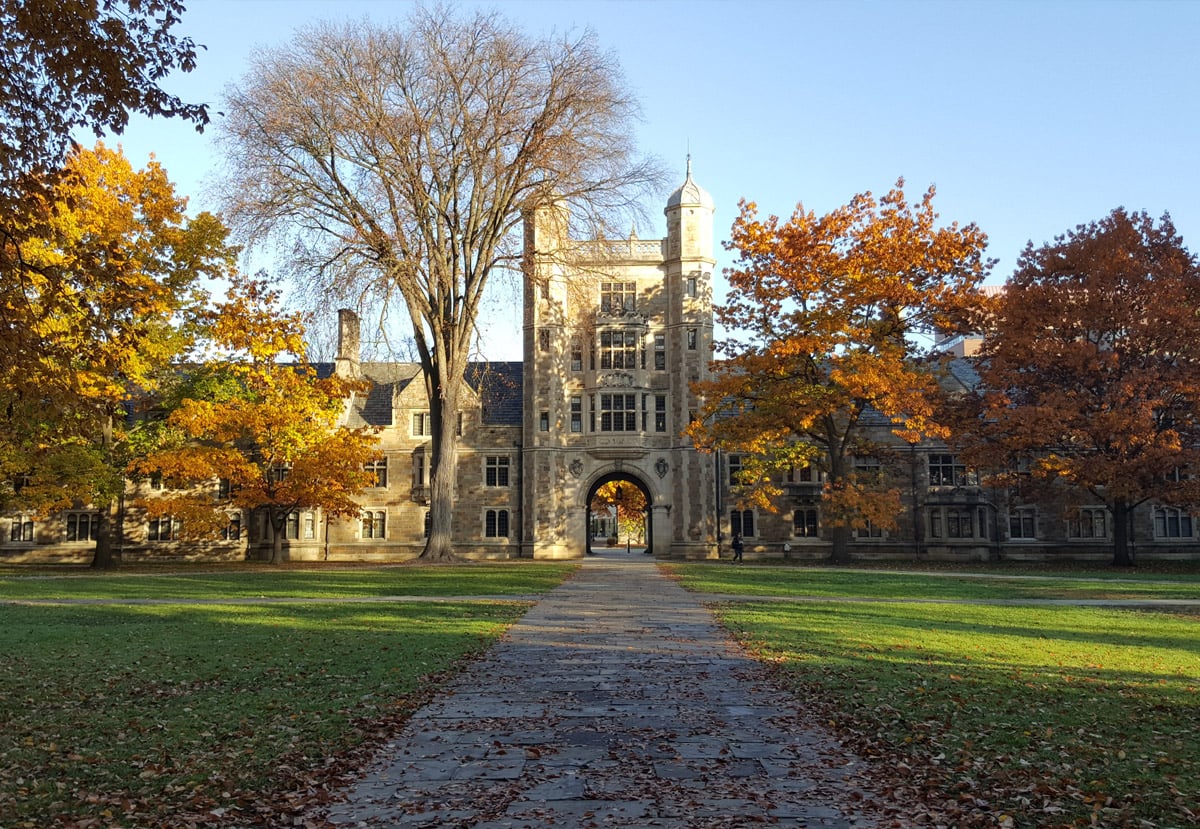Facilities Management in Universities & Higher Education

All higher education institutions are compelled to attract and retain students. This happens in part by offering advanced technology in a comfortable environment with high-tech classrooms and enticing housing options. Committing to limiting waste and reducing environmental impact can also go a long way.
Modern colleges and universities are eager to grow in size and offerings while also leaving a smaller footprint. This might seem contradictory, but with the right systems in place, facilities management in universities and higher education can meet these competing goals.
Today, advanced technologies like data analytics for building data allow universities to create safe, comfortable, and efficient environments for their students and faculty. They are also how schools save money and satisfy stakeholders at every level.
The Changing Demands of Modern Higher Education
A generation ago, the primary electrical demands for most dorms were basic lighting and HVAC, TVs, a few video game systems, and perhaps a mini-fridge. Some students might have had computers.
Now, every dorm must be wired to support a plethora of electronics while providing the fastest possible WiFi and constant uptime. Additionally, every building across campus requires the latest technological capabilities—advanced AV equipment, laboratories to support cutting-edge scientific research, and more. Facilities managers in higher education must also account for:
Air quality systems
Whether in the dorms or the classrooms, students, teachers, and staff demand better circulation, cleaner air, and safer conditions. Increasingly, this represents the bare minimum a college or university can offer.
Physical security
Access controls, cameras, safe zones, automatically locking doors, and more reflect the need for advanced safety protocols on campus.
Cybersecurity
A connected campus is a vulnerable one. Cybersecurity must be a priority, and all systems must be configured with robust security measures in place.
Electric chargers in parking lots
Electrical charging stations in parking lots are a must to meet the needs of the next generation of drivers.
These new and evolving demands require more sophisticated facilities management in higher education. But they're just additions to needs that have existed for years.

The Constant Demands of Modern Higher Education
When we think of college and university expenditures, we often think of the most public-facing expenses, like teacher and staff salaries, financial aid, and updating amenities and labs. In reality, these items are just part of the picture.
The energy costs associated with running a campus can be astronomical. A typical 50,000 square foot building on a college campus can consume more than $100,000 worth of energy every year. Energy expenditures cover everything from:
Electricity
- Ventilation
- Refrigerating
- Cooling
- Lighting
- Computing
Natural gas
- Space Heating
- Water Heating
These demands are consistent, but of course, they are neither constant nor universal. Analyzing and understanding how various systems are used can help facility managers increase efficiency.
How Facilities Management in University and Higher Education Can Increase Efficiency
With hundreds or thousands of individual occupants making individual choices throughout each day, it can seem difficult to take meaningful steps to reduce energy use. But there are potential areas for reducing energy consumption in campus facilities, including:
Showers
About 22% of students in the U.S. live in on-campus dormitories. While that indicates that most students live in off-campus or other designated housing, that’s still a lot of dorm residents—and a lot of showers. But that doesn’t mean all water must be piping hot all day.
Except for some late stragglers, the highest demand for hot water will be in the morning before classes. The rest of the day can be deprioritized when it comes to your hot water demands, reducing expenditures.
Lighting and Security
The lighting needs of higher education institutions differ from most businesses. In the latter, most employees go home for the night, meaning automatic lights can be scheduled to turn off at a certain time. At universities, however, residences, libraries, labs, and classrooms are often used around the clock. But this doesn’t mean every light has to be on at all times.
Intelligently integrated occupancy sensors that communicate with other parts of the building can be instrumental in reducing energy use while keeping students and staff safe. By detecting and anticipating occupancy, unnecessary lighting can be eliminated. But you can also take it a step further. When a light turns off in the lab, for example, lights in the hallways can be turned on automatically so a student isn’t plunged into darkness. These are complex systems, but they ultimately help cut energy costs while maintaining comfort.
Temperature and Air Quality
Maintaining appropriate temperatures and good air quality is a priority across campus buildings of all types, but there are certain areas in which it is a particular concern. Universities with advanced music programs, for example, often have auditoriums and studios with advanced acoustics that demand precise control of temperature and humidity. Likewise, research labs often have exacting thermal and air quality requirements. Integrating an advanced system of HVAC equipment, air purification devices, and occupancy sensors can ensure that these requirements are met as efficiently as possible.
There is no one “college setting” in higher education facilities management. There are dozens of systems and countless pieces of equipment, devices, and sensors across enormous and ever-expanding campuses. Controlling them for efficiency, security, and student experience is crucial.

How Facilities Management for Higher Education Can Upgrade
Maintaining modern university facilities can be complicated. There are diverse needs across and within buildings that demand changes throughout the day and the year. Meeting energy goals while offering outstanding occupant experiences requires integrating all systems with an advanced analytics platform that offers single-pane-of-glass control.
What does this look like for facilities managers?
- Greater visibility. An intelligent analytics platform organizes and prioritizes data to produce deep insight into all systems, allowing you to understand exactly what is happening in any part of the campus at any time.
- Advanced fault detection and diagnostics. In a complex system, malfunctions can be easy to miss and maintenance staff is often stretched thin. Advanced fault detection according to custom rules and prioritized alarms alert you to anomalies as soon as possible, before critical failure. A state-of-the-art analytics platform can even suggest solutions or make adjustments to automatically correct problems, minimizing downtime and reliance on manual intervention.
- Easier identification of inefficiencies. An analytics platform can mine historic data and track real-time data to identify high energy consumption or suboptimal performance and offer suggestions for improvement.
- Better automation. Analytics with machine learning capabilities opens up new possibilities for automation that reduces energy use, optimizes operations, and enhances the occupant experience. For example, as classrooms fill up, air purification systems can ramp up to improve air quality.
By integrating the right technologies, including analytics, facilities management for higher education can reduce cost and provide a world-class student experience.
Case Study: Upgrading Stanford University
Stanford University serves as a prime example of how thoughtful integration and intelligent analytics can transform facilities management in higher education.
Challenge: One of the top research institutions in the country, Stanford has a wide mix of legacy buildings and high-tech facilities. In 2018, the university partnered with Buildings IOT to upgrade from Niagara AX to Niagara N4 across 17 buildings throughout the campus, including the library, math department, performing arts center, jet propulsion laboratory, and linear accelerator center. In addition to this upgrade, the university was looking for modern graphics, cybersecurity, and a unified user interface.
Solution: To accomplish these goals, Buildings IOT:
- Completed site walks to evaluate existing conditions. Every building had unique requirements and conditions to consider as the team reconfigured the platform.
- Determined unique needs for each building and zone. For example, the performing arts center required specific humidity levels, and the laboratory and clean rooms required special clearances and allowances.
- Installed hardware. The Buildings IOT team started with some of the least-risk spaces and worked our way through all 17 buildings.
- Developed state-of-the-art equipment graphics using a dedicated team of in-house designers.
Results: The upgrade was completed on time and in budget and achieved the key goal of bringing all building management systems in line with universitywide cybersecurity efforts. It provided a model for the rest of the campus to upgrade their operating systems to increase efficiency. By integrating more than a dozen disparate buildings, Buildings IOT offered an innovative solution to upgrade and modernize facilities management at one of America’s premier campuses.
Working With a Partner in Facilities Management for Higher Education
To realize the benefits of advanced analytics, higher education institutions need a partner who can identify their challenges, opportunities, and maximize their possibilities. This means working with a master systems integrator with deep domain expertise and the experience necessary to create well-architected systems using cutting-edge technologies. This includes a best-in-class analytics platform like onPoint, which uses advanced machine learning algorithms to continuously refine its understanding of each building and offers unprecedented control via user-friendly dashboards.
The world of higher education is changing, and facilities management needs to keep up with evolving demands. With the right partner, you can ensure your campus achieves its energy goals, improve operational performance, and offer outstanding experiences for students, faculty, and staff.


